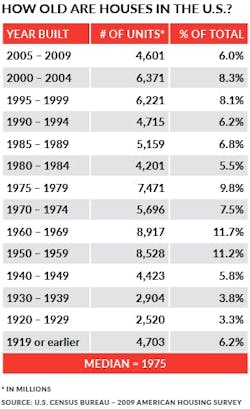A Tempered Conversation About Windows
Recently, window safety was front and center in the news when a New Yorker fell through non-tempered glass in an older entrance door and subsequently lost his life. This is a sad reminder that the guidelines for how we sell, specify, and make windows and doors are lifesaving.
The Consumer Product Safety Commission’s standards requiring tempered safety glass in doors were established in 1977, so glazing manufactured or installed before then may not have the safety features we take for granted today. Since we, as an industry, have worked hard to ensure that new products in hazard areas are fitted with safety glazing, it’s normal for the public to assume that all doors and close openings use safety glazing. However, more than 25 percent of North America’s housing stock consists of buildings constructed before 1977. Hazardous openings in many of these buildings have been refitted with tempered glazing, but many have not.
As experts who homeowners rely on for sound advice, remodelers should educate consumers about safety glazing. While this could result in increased sales opportunities, the core of this initiative should center on highlighting the need to enhance outdated glazing and fenestration products. Here are some suggestions on what to look for in a client’s home.
1] Begin by surveying the home for fenestration products located in the hazard area as defined by code. The International Code Council’s building codes require that: any door must have approved safety glazing that meets ANSI Z97.1 testing; any window within 24 inches of the door must have safety glazing; and any window 18 inches or less from the floor, and any window near stairs, bathtubs, or showers must have safety glazing. Large windows near walkways also require safety glazing in most instances. The IRC is extensive, so it’s best if you directly refer to it for details on requirements. Another handy guide is at specsandcodes.typepad.com/the_code_corner/safety-glass
2] Glazing that meets Z97.1 testing is marked with lettering in one of the corners. These etchings are usually small and light gray, so a flashlight can be helpful for seeing them. The etching, often called a “bug,” will normally look like this example:
3] You can also use an electronic tempered glass detector to determine if glazing has been tempered. Manufacturer EDTM offers one, which can be found at edtm.com/index.php/glass-inspection-tools/tempered-glass-detector
4] Other types of glazing, such as laminated glass, can also be used for hazard areas. Recognize that these glazing products will be differently marked but are completely acceptable for safety use.
5] Provide the homeowner with recommendations for replacement.
6] Since this audit could be a legal concern, it’s best to have an attorney create a template with the appropriate disclaimers to leave with your customer.
Contractors’ expertise in safety glazing technology can also be enhanced through training and even certification of your sales team to better understand the uses and methods of safety glazing. This will be a continuing value-added asset for your company.
The use of these practices and assets will help ensure safety while simultaneously offering contractors new opportunities for increased revenue and profits. Ultimately, contractors can enhance their professional reputations and benefit their communities with a commitment to this critical safety aspect of homes
and businesses.
See below for some additional resources:
Safety Glazing Certification Council (SGCC)
A nonprofit corporation that provides certification of safety glazing materials.
International Code Council (ICC)
Develops model codes and standards used in design, building, and compliance processes.
Glass Association of North America (GANA)
Industry group serving flat-glass manufacturers, fabricators, and glazing contractors.



